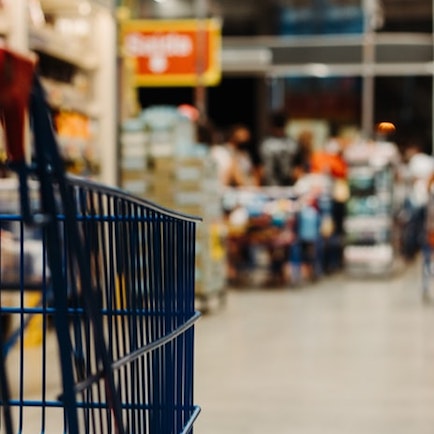When It Comes to Retail, Convenience Is the Name of the Game
Key Takeaways
- Digital transformation is accelerating across the global retail industry, and the ongoing pandemic has made technology more important than ever before.
- Pre-pandemic, retail trends were not accelerating at the same pace they are today. As a result of the ongoing pandemic, customer journeys are now more digitally focused, and more shoppers are looking for easy online or mobile purchasing.
- For consumers, convenience is the name of the game and many retailers have pivoted to offer same-day delivery, curbside pick-up, buy online pick up in store (BOPIS) and easy returns. In addition to convenience, the pandemic has accelerated payment digitization across the entire retail industry.
- Additionally, real-time inventory transparency allows consumers to leave the guesswork out of their in-store shopping excursions.
- Like many in the retail industry, Gordon Brothers believes the increased demand for convenience and digital payment tools will remain after the effects of the pandemic subside.
- The pandemic has changed the way consumers shop and their preferences while doing so. The winners post-pandemic will be those who pivoted to meet new customer preferences.
As the number of individuals receiving vaccines continues to increase, there’s growing optimism that the worst of the COVID-19 pandemic will soon be behind us. While a truly post-pandemic world won’t be fully realized for some time, the changes it brought are here to stay.
Digital transformation is accelerating across the global retail industry, and the ongoing pandemic has made technology more important than ever before. For consumers, convenience is the name of the game and many retailers have pivoted to offer same-day delivery, curbside pick-up, buy online pick up in store (BOPIS) and easy returns. In doing so, they have retained customers and acquired new ones over the past year.
Additionally, real-time inventory transparency allows consumers to leave the guesswork out of their in-store shopping excursions. Retailers with the right inventory in stock and consumer purchasing conveniences are the true winners of the pandemic.
With this digital transformation and evolution of physical retail spaces, the use of frictionless payments has increased since fewer retailers and consumers want to handle cash amid the ongoing pandemic. 2020 was an inflection point for digital payment adoption in the U.S. and boosted sectors like mobile proximity payments, digital wallets and peer-to-peer (P2P) payments.
Like many in the retail industry, Gordon Brothers believes the increased demand for convenience and digital payment tools will remain after the effects of the pandemic subside.
Digital Transformation Necessary for Retail Survival
Retailers must prioritize digitalization and digital transformation efforts, and companies that do not digitally transform will likely fail.[1]
As shutdowns began across the globe, e-commerce sales in the U.S. skyrocketed, growing 44.5%, 36.6% and 32.1% for the second, third and fourth quarters of 2020, respectively, over 2019.[2] Despite the increase in e-commerce, it’s not enough to offset the effect of pandemic-related shutdowns many retailers have experienced over the past year.
Gordon Brothers believes this agile, digital-first approach must include omnichannel, inventory transparency and an emphasis on customer convenience to make the most of physical and digital resources.
To help their business transform to meet these new customer expectations, retailers are reviewing their real estate portfolio and in-store inventory to try and reduce costs and mitigate ongoing supply chain challenges.
Consumers Craving Convenience
Pre-pandemic, retail trends were not accelerating at the same pace they are today. As a result of the ongoing pandemic, customer journeys are now more digitally focused, and more shoppers are looking for easy online or mobile purchasing. Consumers are craving convenience, and retailers must continue to adapt their operations for evolving consumer behaviors.
As part of the acceleration in e-commerce, consumers are purchasing online and picking up their purchases in store or curbside. With the increased ease in purchasing, there’s increased importance on easy returns. Retailers that make returning items easy preserve revenue and their consumers’ loyalty. Shoppers are also avoiding the need to touch card readers, sign or enter a PIN for transactions.
While e-commerce and omnichannel retailers had been taking up more and more market share prior to the pandemic, it’s created an even larger divide between retailers with robust and expanding e-commerce, BOPIS and curbside platforms.
Many retailers responded to the pandemic by delaying any store growth plans and switching focus to digital fulfillment options, relying on their existing stores for same-day delivery, BOPIS and curbside pickup in addition to easy returns.
The pandemic has ushered in greater adoption of additional consumer conveniences like expanded home delivery, virtual shopping, live-streaming, appointment shopping and inventory visibility.
E-commerce retailers will continue to see an increase in online comparable sales even after stores reopen, and retailers that employed hybrid online shopping and brick-and-mortar commerce strategies before the pandemic were better able to respond to crisis-driven consumer shifts.
U.S. Consumers Catching Up on Frictionless Payments
In addition to convenience, the pandemic has accelerated payment digitization across the entire retail industry. Once considered a more niche technology, frictionless payments and mobile wallets are moving more mainstream in the U.S.
As retailers turned to e-commerce to keep doors open and increased public hygiene at checkouts, consumers refrained from cash in favor of electronic and frictionless payments. Digital wallets like Apple Pay and Google Pay and major credit cards like Europay, MasterCard and Visa are the top beneficiaries of this consumer behavioral change. P2P payment apps like Venmo and Cash App benefited as well.
In the U.S. 67% of retailers accept one or more forms of frictionless payments as of August 2020, 58% of which take frictionless cards that consumers either wave or tap at payment terminals. In 2020 alone, no-touch payments increased nearly 70%, and among retailers that had implemented frictionless payments, 94% expect the increase to continue over the next 18 months.[3]
Prior to the onset of the pandemic, digital payments, especially mobile payments, were only growing incrementally in the U.S. despite its popularity elsewhere in the world. The penetration rate of mobile proximity payments among U.S. smartphone users in 2019 was only 29%.[4]
To compare with other users globally, China’s rate of penetration is 81% among smartphone users.[5] In fact, China is so far ahead of the digital payment curve, the country is testing digital currency and electronic payment system, and the People’s Bank of China is leading these efforts.
Although Asian countries, especially China, are leading the mobile payments market, the U.S. is the second-largest market at $465.1 billion worth of transactions and slated to grow by 49% to $698 billion in 2023.[6]
As the payments ecosystem expands and digital payments increase, nearly 50% of global shoppers were using digital payments more than before the pandemic, and the majority plan to continue doing so after the virus is contained.[7] It’s estimated there will be 1.31 billion proximity mobile payment transaction users worldwide in 2023, up from 950 million users in 2019.[8]
Necessity Is the Mother of Invention
The primary driving force for most new inventions and adaptations is a need. The ongoing pandemic caused many retailers to rapidly deploy innovation or face the alternative of permanent closure.
The pandemic has exposed weakness that continue to alter the retail status quo and accelerate industry trends globally. While the past year brought unprecedented uncertainty, complexity and change to the industry, the pandemic will continue to shape the year ahead.
As the world begins to recover from the pandemic, consumers will reallocate funds and redefine what is essential in addition to their preferred method of shopping. This will likely be a combination of their pre-pandemic preferences and new pandemic-driven approaches. The spending we saw during the height of the crisis will moderate and spending behaviors will continue to evolve.
It remains to be seen how and to what extent the pandemic will alter the retail industry and reshape consumers’ long-term needs, wants and expectations. Shifts will occur as the country reopens; however, we do not foresee a full return of consumer behavior from late 2019 or early 2020.
The pandemic has changed the way consumers shop and their preferences while doing so. The winners post-pandemic will be those who pivoted to meet new customer preferences. Retailers and those in the retail industry must continue to evaluate and evolve their business models, reduce costs and adjust to the increased power of the consumer.
Related Article:
Shifting Consumer Behavior Forces Evolution of the Mall – Tim Shilling
Footnotes
[1] World Economic Forum, Companies now face an urgent choice: go digital, or go bust https://www.weforum.org/agenda/2020/10/digital-transformation-or-bust/
return
[2] U.S. Department of Commerce, Latest Quarterly E-Commerce Report https://www.census.gov/retail/index.html#ecommerce
return
[3] COVID-19, Contactless Payments, And Retailer Concerns: The State Of Payments In The US, August 27, 2020 https://www.forrester.com/report/COVID19+Contactless+Payments+And+Retailer+Concerns+The+State+Of+Payments+In+The+US/-/E-RES162216
return
[4] eMarketer, Contactless Competition and Digital Limitations Stifle Proximity Mobile Payment Growth in the UK, January 30, 2020 https://www.emarketer.com/content/contactless-competition-and-digital-limitations-stifle-proximity-mobile-payment-growth-in-the-uk
return
[5] eMarketer, Contactless Competition and Digital Limitations Stifle Proximity Mobile Payment Growth in the UK, January 30, 2020 https://www.emarketer.com/content/contactless-competition-and-digital-limitations-stifle-proximity-mobile-payment-growth-in-the-uk
return
[6] Mobile Wallets to Become a $3.5T Worth Industry by 2023, March 10, 2021, https://www.finaria.it/pr/mobile-wallets-to-become-3-5t-worth-industry-by-2023/
return
[7] Research and Markets, Global Online Payment Methods 2020 and COVID-19’s Impact, June 30 2020, https://www.researchandmarkets.com/reports/5117132/global-online-payment-methods-2020-and-covid-19s?utm_source=dynamic&utm_medium=GNOM&utm_code=rfq3xs&utm_campaign=1406238+-+Global+Online+Payments+Industry+Report+2020+-+Payment+Behavior+is+Changing+as+a+Result+of+the+Coronavirus+(COVID-19)+Outbreak&utm_exec=joca220gnomd
return
[8] Number of proximity mobile payment transaction users worldwide in 2018 and 2019, with forecasts from 2020 to 2023 January 15, 2021 https://www.statista.com/statistics/557959/global-mobile-proximity-payment-users/
return

